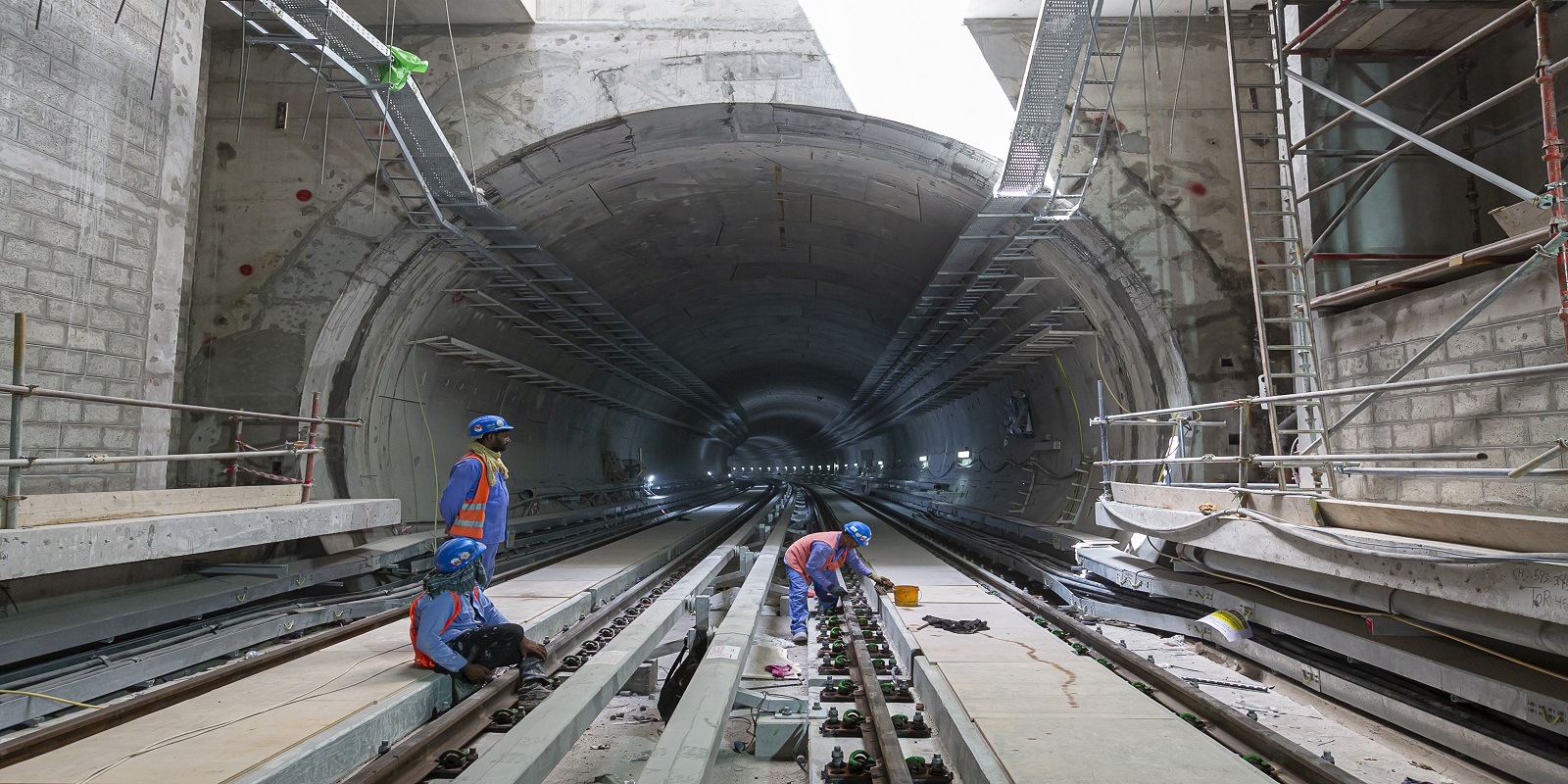- Middle East
- Go to acciona.com
-
Building with concrete in very hot places, such as the Middle East, poses specific challenges. At high temperatures, the water in the concrete mix evaporates quickly, and this can affect the workability and strength once it sets.

Building with concrete in very hot places, such as the Middle East, poses specific challenges. At high temperatures, the water in the concrete mix evaporates quickly, and this can affect the workability and strength once it sets. A second risk in high temperatures concerns the chemical reaction that takes place once cement is mixed with sand, gravel and water to form concrete. This chemical reaction produces heat, and if the temperature of the mix rises above 70ºC and/or if the temperature difference between the concrete structure core and the surface goes above 20ºC, cracks could arise as the concrete sets, which weakens the resulting structure.
As a result, the temperature of the concrete mix must be carefully controlled throughout the building process and while it sets and cures to ensure the resulting structure is sound.
At ACCIONA, global project teams work closely with the company’s concrete specialists at the Technical Services Department in Madrid to optimise the temperature and hydration of the concrete mix and ensure that it meets the project’s technical requirements, including strength and durability. Every project is different, which means that ACCIONA’s concrete specialists are much in demand, sometimes flying to the site of big projects to make their calculations.
They examine the quality of the local cement, the gravel and sand that will go into the input, the variation in temperature and humidity during the duration of the construction phase, as large, complex projects can take several years to complete.
In the UAE, where we were responsible for building the extension of the Dubai Metro “Route 2020”, concrete specialists were on hand to advise on the exact heat of hydration and temperature of the concrete mix at each phase of the project. During very hot days, we added ice flakes to the concrete mix to keep it cool during transport to the construction site and to control the chemical reaction as the cement set.
The technicians use specialist software based on finite element method to conduct simulations and predict how the concrete will behave as it cures. These calculations are then used on site to control the temperature and hydration of the mix. Another tool used by our concrete specialists are temperature smart and wireless sensors. These are deployed at every stage of the process: they measure and transmit data on the temperature of the materials before mixing, during transport, and while it is poured and set.
At high temperatures, concrete sets too quickly, making it difficult to pour, handle and give shape to a structure. If it sets too quickly, cold joints can emerge between successive layers of concrete, and this may also weaken the structure. Getting the hydration and temperature right is therefore critical to the success of the building process.
The Dubai metro extension used 270.706 cubic meters of concrete during construction. For other big projects such as the Shuqaiq 3 reverse osmosis desalination plant in Saudi Arabia, already in operation, the total amount of concrete used during its construction was 80,000 cubic meters. Shuqaiq 3 has a capacity of 450M liters of potable water per day, enough to meet the needs of two million people.
To control the temperature of materials in very hot climates, options include storing them under cover to shield them from the sun; using cold air cannons to lower the ambient temperature; and spraying some of the materials with a mist of cold water. Insulating the storage silos, using heat-reflecting roofs, cooling silos with water, and building silos with double walls in which cold water can circulate are other methods that can keep materials cool before mixing.
One of the techniques deployed to adapt to the high temperatures of the Gulf is the timing of concrete pouring and the frequency. Very often we time the concrete pours to start after the sun sets, to avoid direct sunlight and day-time high temperatures. We also couple this, under the guidance of our specialists, with specific quantities of concrete, depending on the shape and size of the pour, to ensure the curing time falls within the appropriate hours.
In extreme temperatures – an increasingly frequent occurrence due to global warming – concrete mixing trucks can be sprayed with liquid nitrogen to keep temperatures low during transport from the concrete plant to the project site. Concrete mixers are sometimes painted white to reflect heat or are covered with insulating materials to avoid excessive heating during transport.
In the Middle East, our project teams prefer to work in the cool hours of the day or at night to better control the temperature of the concrete mix. When ambient temperatures soar above 40ºC, or during windy days that accelerate evaporation, the technical experts recommend halting work as casting could be compromised.
On site, our teams have covered casting structures with tarpaulins to shield them from the sun, used cold air cannons to slow down the curing process, and when needed, spraying structures with water or curing agents to avoid concrete drying out too fast.
In fact, it is great to see that our people design solutions to optimise construction processes, as well as new technologies and materials that are more efficient at the work site, to reduce the potential impact on nature.
By Jose Vera-Agullo, ACCIONA R&D Concrete Manager.